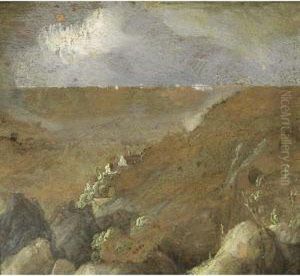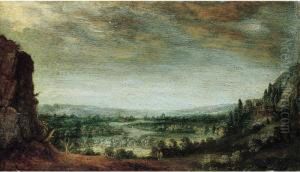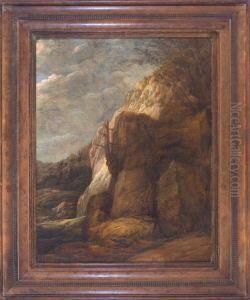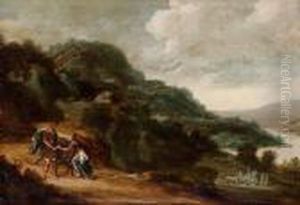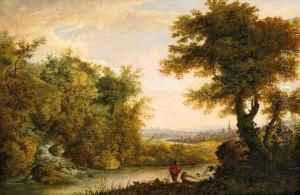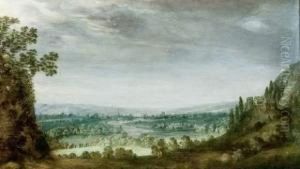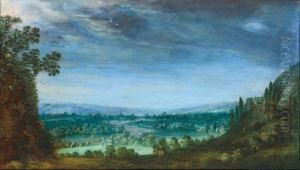Hercules Pietersz Seghers Paintings
Hercules Pietersz Seghers was a Dutch painter and printmaker of the Dutch Golden Age, known primarily for his innovative etchings and landscapes. Born in Haarlem around 1589, Seghers is often regarded as one of the most fascinating and experimental artists of his time. He was one of the early Dutch artists to be influenced by the work of great landscape painters like Gillis van Coninxloo, and his work represents an early example of the type of naturalism that would become more prevalent in Dutch art later in the 17th century.
Seghers' father was originally from Flanders and had moved to the Dutch Republic, where Hercules was born. The details of Seghers' early life and training are somewhat obscure, but it is believed that he may have studied under Gillis van Coninxloo in Amsterdam. He became a member of the Haarlem Guild of Saint Luke in 1612 but later moved to Amsterdam, where he spent the majority of his career.
What sets Seghers apart from his contemporaries is his unique approach to printmaking. He experimented with various etching techniques, often reworking his plates in etching and drypoint to create different states. He also printed on coloured papers and textiles, adding hand colouring to create individualised impressions that were strikingly different from one another. This approach was highly unusual for the time and predates the modern conception of the artist's print as a unique work of art. Seghers' prints often depicted expansive, rugged landscapes, which conveyed a sense of the sublime and were sometimes based on his own imaginative interpretations rather than direct observation.
Unfortunately, Seghers' art was not widely appreciated in his own time. He sold few paintings, and his innovative prints did not attract the acclaim they deserved. Consequently, he lived in poverty for much of his life. However, his work was admired by some of his more famous contemporaries, including Rembrandt, who owned several of Seghers' prints and was clearly influenced by his landscapes.
Rembrandt was known to have reworked one of Seghers' plates, 'The Flight into Egypt,' turning it into his own composition. This was a telling sign of the esteem in which he held Seghers' work. Despite the lack of commercial success, Seghers continued to be dedicated to his art, leaving behind a legacy that would be greatly appreciated by later generations.
The exact date of Seghers' death is unclear, but it is believed he died around 1638 in Amsterdam. His innovative techniques and his unique approach to the landscape as a subject matter have earned him a place in art history as a significant figure in the Dutch Golden Age of painting and printmaking. After his death, his works became more widely recognised and they continue to be studied and admired for their originality and beauty.
